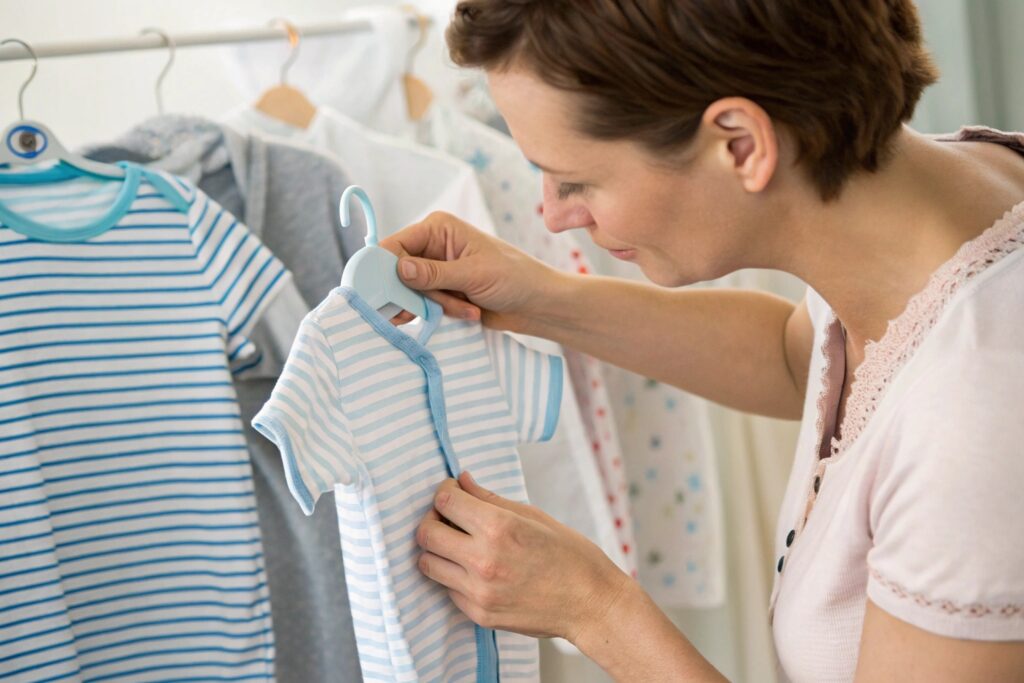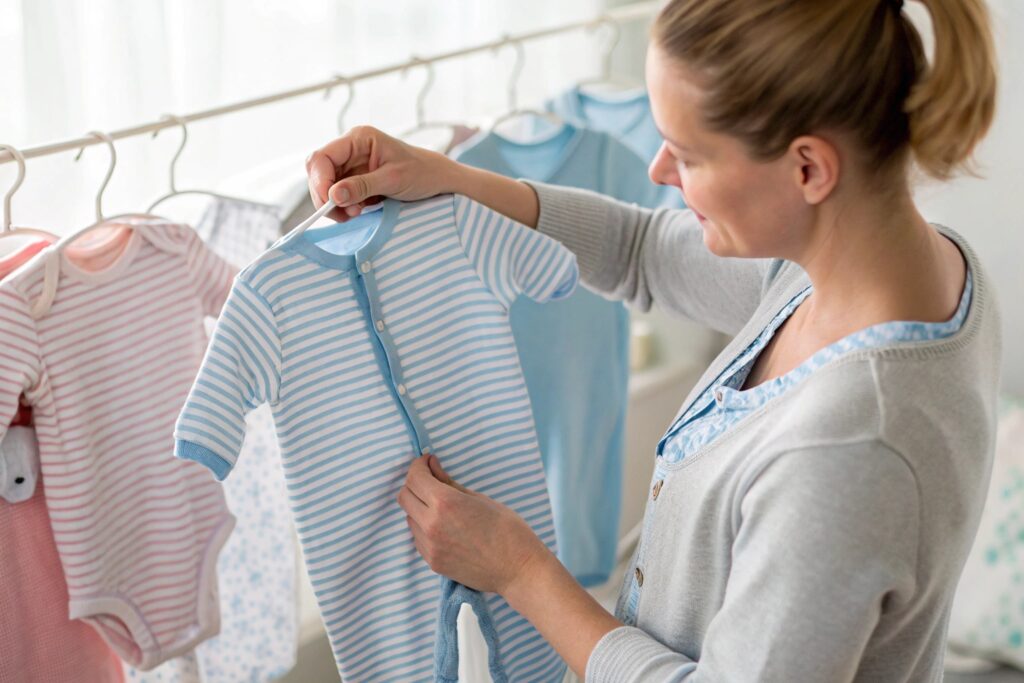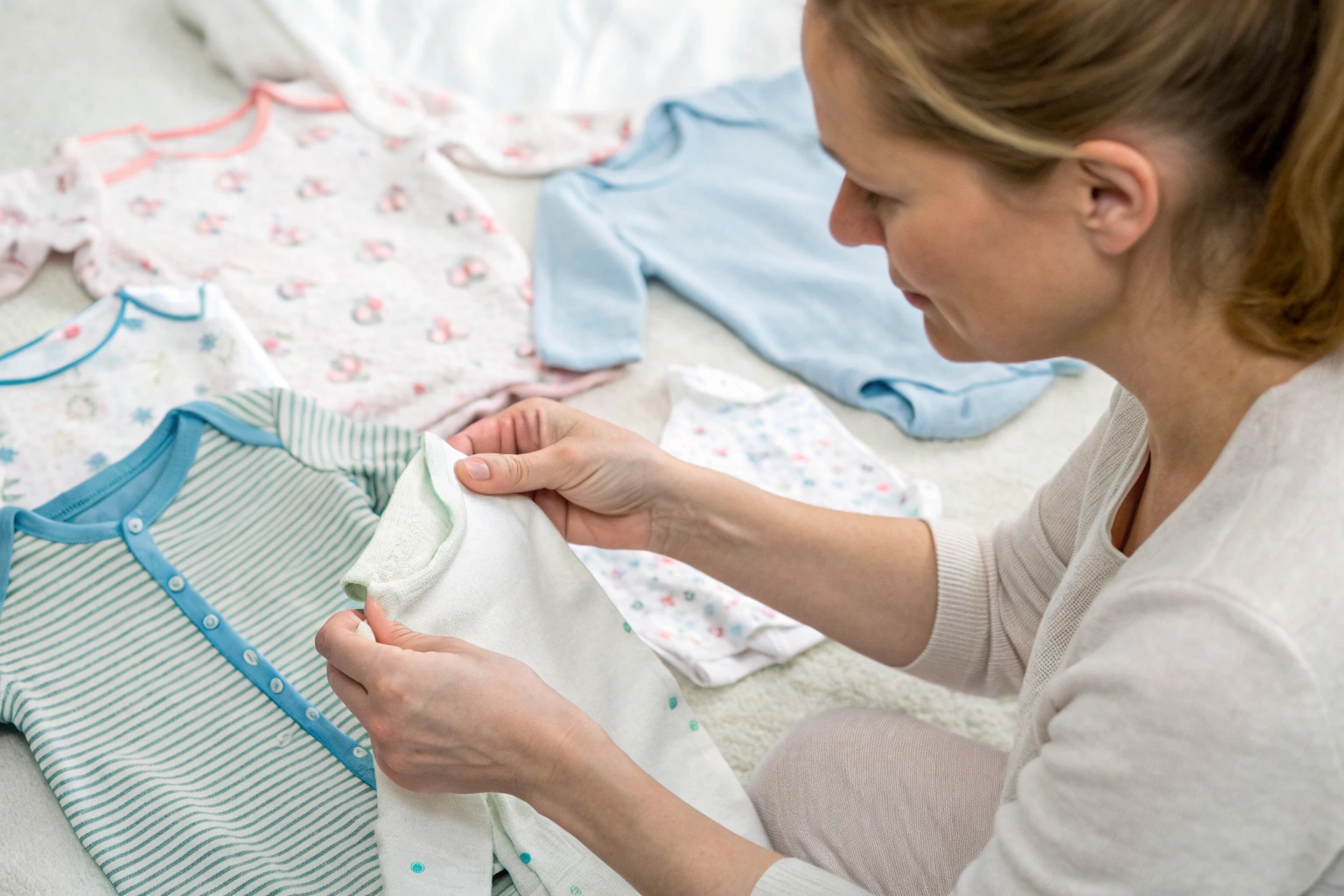In the world of babywear, soft isn’t always safe. Many parents report rashes, redness, or allergic reactions caused by clothing—despite the items feeling soft to the touch. The culprit? Poor material choices, chemical finishes, or hidden allergens in fabrics.
Reducing skin irritation complaints starts with smarter material selection. Choosing the right fiber blends, avoiding harmful chemicals, and verifying certifications can help brands deliver truly skin-friendly babywear.
Here’s how to make better fabric decisions that keep baby skin calm and your customer satisfaction high.
What Fabrics Are Least Likely to Irritate Baby Skin?
Baby skin is up to 30% thinner than adult skin—and far more sensitive to heat, friction, and chemical exposure. The best fabrics are natural, breathable, and processed without irritants.
Top skin-safe fabrics include organic cotton, bamboo viscose, and TENCEL™ modal—known for their breathability, softness, and gentle touch.

Best fabrics for reducing irritation:
| Fabric | Why It’s Safe for Baby Skin |
|---|---|
| Organic Cotton | Grown without pesticides, softens with wash |
| Bamboo Viscose | Thermoregulating, silky, antibacterial |
| Modal (TENCEL™) | Smooth texture, low friction, breathable |
| Linen (for toddlers) | Naturally hypoallergenic, best for heat |
Fabrics to avoid:
- Polyester and acrylic blends – trap heat and moisture
- Nylon or rough wool – may cause itching or abrasion
- Heavily dyed synthetics – can trigger rashes or allergies
A great fabric respects baby skin as much as it supports durability and style.
How to Avoid Common Allergens in Baby Clothing Materials?
Skin reactions are often caused by trace allergens—not just the fiber itself, but what’s added during production.
Common triggers include harsh detergents, residual pesticides, metallic dyes, and finishes containing formaldehyde or phthalates.

Common irritants in unregulated babywear:
| Allergen Source | Why It’s Problematic |
|---|---|
| Azo dyes | May release carcinogenic amines |
| Nickel in snaps/zippers | Linked to metal allergy rashes |
| Flame retardants | Contain harmful brominated chemicals |
| Formaldehyde-based resins | Used in wrinkle-free finishes |
How to avoid them:
- Choose GOTS or OEKO-TEX certified fabrics
- Specify nickel-free fasteners in tech packs
- Request “no chemical softening” or “enzyme-washed” processes
- Ask for MSDS sheets (Material Safety Data Sheets) from suppliers
- Avoid vague marketing terms like “eco” without documentation
Less chemical input = less risk of a skin reaction.
Why Organic and OEKO-TEX Certified Textiles Matter?
In babywear manufacturing, independent third-party certifications are the gold standard for ensuring safety. They confirm that the fabric is free from harmful substances—not just in theory, but in practice.
GOTS and OEKO-TEX® are the most trusted certifications for babywear, especially for international retail or premium private labels.

Key certification benefits:
| Certification | What It Covers |
|---|---|
| GOTS (Global Organic Textile Standard) | Organic fiber + non-toxic processing + ethical manufacturing |
| OEKO-TEX® Standard 100 | Tests over 100 substances for skin contact safety |
Why it matters:
- Builds trust with ingredient-conscious parents
- Reduces returns due to rash or allergy complaints
- Improves transparency in global sourcing chains
- Meets EU and US compliance requirements
If you’re selling babywear, certified fabric isn’t just a feature—it’s a competitive advantage.
Tips for Testing and Selecting Skin-Friendly Fabric Blends?
Not every fabric labeled “natural” is automatically safe. To reduce complaints, test materials both technically and practically before launch.
Use a mix of lab testing, parent feedback, and touch testing to evaluate comfort, irritant risk, and wearability.

Steps to select safer fabric blends:
- Request detailed fabric composition – avoid hidden polyester or synthetics
- Order swatches and samples – test for softness and finish
- Run wash tests – some fabrics become scratchy after laundering
- Do a “neck test” – hold against sensitive skin like the neck or inner arm
- Use third-party lab tests for pH, AZO dyes, formaldehyde, and nickel
- Ask factories about finishing agents used (softeners, sizing, etc.)
| Test Type | What It Reveals |
|---|---|
| Softness feel test | Comfort and irritation risk |
| OEKO-TEX lab test | Chemical residue levels |
| Pilling and shrink test | Fabric stability post-wash |
| Parent wear-test feedback | Real-world baby comfort and response |
The more proactive your testing, the fewer complaints—and the stronger your brand reputation.
Conclusion
Reducing skin irritation in babywear isn’t just about using soft fabric. It’s about knowing what’s in the fiber, how it’s processed, and what your customers expect. By prioritizing certified, hypoallergenic, and well-tested materials, you’ll protect both baby skin and your business from avoidable returns and trust issues. In babywear, safer fabric is always smarter fabric.










